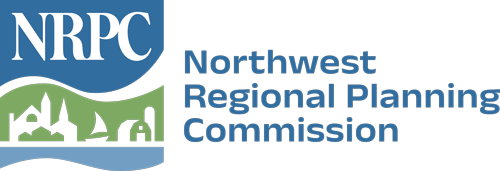In order to better understand the region’s rivers, the NRPC has worked closely with the Vermont DEC River Management Program, to inventory and assess waterways throughout the region. A geomorphic assessment gathers scientifically sound information that can be used for watershed planning and detailed characterization of aquatic habitat, erosion and flood hazards. Priority sections or reaches can then be targeted for riparian restoration or protection.
What can we do with this information?
This data has been used to create maps that show potential fluvial erosion hazards and aid in community conversations to incorporate this information into land use, emergency and facility planning. This data a can inform the development of watershed plans that take a holistic look at solving the problems.
Example: Stevens and Rugg Brooks Watershed Plan
The NRPC continues to work with local, state, regional and federal partners to implement the recommendations of the Stevens and Rugg Watershed Report (2003). In 2005 NRPC received a grant from the US EPA to assist in this effort. These funds were used to support geomorphic assessments of several portions of Stevens and Rugg Brook, urban stream restoration projects, installation and maintenance of a stream gage on Stevens Brook, demonstrations of Low Impact Development practices, installation of rural riparian buffers, outreach and education activities, and support of the Intervale Conservation Nursery, which works to provide native trees and shrubs for watershed conservation.
In FY 08, the NRPC provided project management and funding assistance to the City of St. Albans in constructing a porous concrete sidewalk in Taylor Park. The NRPC also worked closely with UVM Extension to plan and install ten rain gardens throughout the City and, with assistance from BFA-St. Albans and the St. Albans Watershed Association, distributed 60 rain barrels throughout the Stevens and Rugg Watershed. The NRPC has also provided funding to the Franklin County Industrial Development Corporation to improve an existing stormwater swale and to design and construct a new stormwater pond at the St. Albans Town Industrial Park. The EPA grant was also used to fund education and outreach programs including a workshop for engineers, and was used to support a stormwater utility feasibility study for the City and Town of St. Albans.
